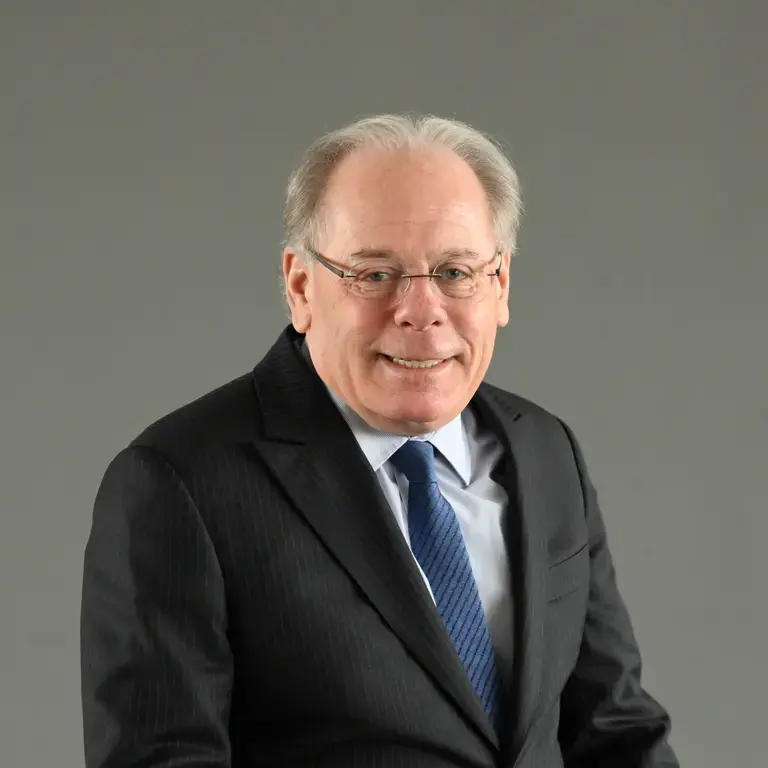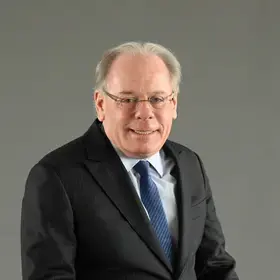By Steven Cohen, Ph.D., Director of the M.S. in Sustainability Management program, School of Professional Studies
Congestion pricing in lower Manhattan was a settled policy at the start of 2024 until shameless politicians stalled it and practically killed it. Ironically, the opposition picked up momentum when the policy’s author, former Governor Andrew Cuomo, opposed implementation as an opening gambit in his political comeback. In a March 2024 New York Post op-ed, he correctly identified problems with the city’s mass transit system and perceptions of crime, but then he observed that the economic recovery from COVID was still not complete and that he no longer favored the congestion pricing policy he supported in 2019. Cuomo’s stance was pure political pandering. He knew that opposition to congestion pricing had been a common feature wherever it had been introduced and simply was looking for a way to distance himself from the policy. According to Cuomo:
…“many things have changed since 2019 and while it is the right public policy, we must seriously consider if now is the right time to enact it. New York City still hasn’t recovered from COVID; office occupancy is still at only 48.9%. For many, traveling to the city is no longer a necessity — and for some it is an unwelcome hardship. What impact will an additional $15 entry surcharge have on New York City’s recovery in this moment — when the migrant crisis, crime, homelessness, quality of life and taxes are all pressing problems? More important, the policy’s success hinges on people’s confidence that mass transit — which is still operating 29% below pre-pandemic ridership levels — is a safe alternative.
The issue of “timing” was a convenient political excuse, and I suspect Cuomo knew that. He was simply trying to disown a policy he should have been proud to own. The facts are that the city’s economy is not fragile and is stronger than ever. According to the City’s Economic Development Corporation’s report on the State of New York’s Economy:
“Employment and labor force participation are at all-time highs: The city’s labor market is strong and improving, with a record number of private sector jobs (4,151,400 annual average) and a record-high labor force participation rate (62.8%) as of September 2024. To put it another way, there are now more jobs in New York City than at any other time in the city’s history and a higher percentage of New Yorkers than ever before either have a job or are actively seeking one. Over the past decade, the economy has diversified, helping it become more resilient to sector-specific shocks: New York City’s status as a major global financial capital remains secure, and there are 21,500 more jobs in the Finance sector than there were pre-pandemic. But the city is now less reliant on the Finance sector for economic growth, and the growth of the Tech, Life Sciences, Healthcare, and Green Economy sectors has provided for a greater diversity of high-growth and high-wage or middle-wage jobs in the city.”
So much for the shaky economy argument. Then there is the other side of the equation, which Andrew understood when he was Governor but seems to have forgotten during his period out of power. Congestion pricing brings economic benefits along with costs. People stuck in traffic are not working, and freight stuck in gridlock adds to the cost of shipping. Time is money, and saved time is saved money. Moreover, one of New York City’s fully recovered businesses is tourism, and tourists aren’t spending money when they’re stuck in traffic. In 2024, over 64 million people visited New York City. I’d say the COVID lockdown is over.
The argument that this is an unreasonable and regressive tax on working New Yorkers is ridiculous. Well over 90% of the people traveling into Manhattan’s central business district come in via mass transit. The congestion fee is a small part of the bridge, highway, and parking fees paid by people who drive into Manhattan south of 60th Street. You need to have no choice, be wealthy, or be a little crazy to drive into that part of the city during working hours. By spending congestion fees on mass transit, you are taxing rich people to subsidize mass transit for everyone. In the limited number of cases where the fee is a genuine hardship, it is easy to provide exemptions.
Unfortunately, Andrew Cuomo was not alone in his fact-free political posturing. The governor of New Jersey was a shameful leader of the opposition, and numerous legislators from the suburbs and outer boroughs continue to oppose congestion pricing. Finally in June, at Hakeem Jeffries’ urging to try to increase the chances that Democrats could retake Congress, Governor Kathy Hochul demonstrated her own political profile in cowardice and paused the program’s implementation. This had the impact of placing the issue of congestion pricing back on the political agenda. After Donald Trump’s election and faced with no way to meet the $15 billion dollar shortfall in the MTA’s capital program, Hochul resurrected congestion pricing at a lower toll rate, and it finally began on January 5, 2025.
This past week, living up to one of his many campaign promises, President Donald Trump’s Transportation Secretary decided to withdraw “federal permission” for the fee. Like many of the new administration’s “bold actions,” it seems likely that the federal government was exceeding its legal authority. Trump’s attack on New York’s self-government seems to have generated an uncharacteristically aggressive response from Governor Hochul. According to Nick Garber in Crain’s New York Business:
“Gov. Kathy Hochul’s unexpectedly fiery defense of congestion pricing in the face of President Donald Trump’s attempt to kill it has given a shot in the arm to business leaders who long supported the Manhattan tolling program. In a Wednesday press conference after the Trump administration revoked federal approval for the program, Hochul called the move “an attack on our sovereign identity,” and said the city’s commuters were being turned into “roadkill on Donald Trump's revenge tour against New York.” It was a far cry from the measured, deal-making rhetoric Hochul had previously used when describing her posture toward the Trump administration.”
New York’s big business community tends to favor congestion pricing due to its support of the goals of reducing congestion and improving mass transit. Small businesses are less supportive and are worried about the impact on their customers who drive to their businesses. While it is too early to judge the impact of the fee, as Winnie Hu observed in the New York Times last week, early indicators are positive. According to Hu:
“While it’s still early, the initial results of the congestion pricing plan have been promising, with less traffic and faster speeds reported on some of the city’s heavily used roadways. Foot traffic, a measure of business activity, has also improved since the tolls took effect, according to city data, although many business owners in the congestion zone remain concerned about the impact of the tolls.”
Moreover, the fee is generating the revenue needed to help fund a share of the MTA’s capital budget. According to Stefanos Chen and Winnie Hu of the New York Times:
“New York’s congestion pricing plan raised $48.6 million in tolls during its first month, a strong start for the program that exceeded expectations and kept it on track to raise billions of dollars for the region’s decaying mass transit system.”
The funding is expected to generate the revenues to retire the debt of $15 billion in municipal bonds needed to update the decaying and, in some places, century-old technology used in the city’s subway system.
Despite these early successes, polls continue to indicate that the congestion fee is unpopular, and, due to its visibility and novelty, pollsters continue to gauge public sentiment. However, I know of no tax that is popular. Perhaps pollsters should also measure the public’s opinion of property, income, and sales taxes. I’m guessing that congestion fees would poll better since most people don’t have to pay them. Despite her newly aggressive support of congestion pricing, Governor Hochul brought this problem on herself. By delaying the fee, she reopened the politics of congestion pricing. Reducing the fee and denying the MTA the flexibility to raise and lower the fee depending on conditions make it a less agile policy design. There was some thought given to raising the fee during “gridlock alert days.” Hochul quickly shot that idea down. When Uber uses surge pricing or Delta Airlines adjusts fares to stimulate traffic, they have wide latitude to price according to need.
Pandering politicos from the Democratic Party—Governor Murphy of New Jersey, along with Hakeem Jefferies and Andrew Cuomo—contributed to this mess. Rather than using their public platform to provide facts to the public, they preferred to lie and dissemble for anticipated political gain. Now they find themselves allied with President—or is that King—Donald Trump.
I’m afraid we will need to get used to fact-free politics for a while. From Cuomo: “New York’s economy is fragile,” even though it isn’t. From Hochul: a fee of $15 for working-class New Yorkers to drive to lower Manhattan is a disaster (even though they don’t typically drive in), but for some reason a $9 congestion fee is OK. From Trump: President Zelensky started the invasion of his own country, not Mr. Putin, whose army did the invading. Reality has a way of reasserting itself, even in the political world. But for now, disinformation and misinformation seem to be in ascendence…
Views and opinions expressed here are those of the authors, and do not necessarily reflect the official position of Columbia School of Professional Studies or Columbia University.
About the Program
The Columbia University M.S. in Sustainability Management program offered by the School of Professional Studies in partnership with the Climate School provides students cutting-edge policy and management tools they can use to help public and private organizations and governments address environmental impacts and risks, pollution control, and remediation to achieve sustainability. The program is customized for working professionals and is offered as both a full- and part-time course of study.



